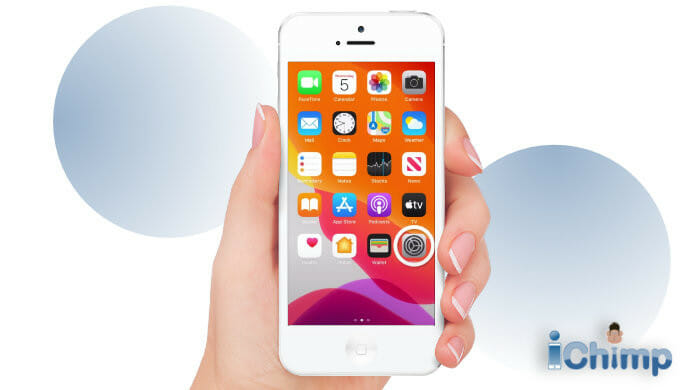There are several methods you can use to power off your iPhone.
Firstly, you can use the buttons on your phone to switch it off. On most models press and hold down the Volume Up or Down button (it doesn’t matter which) and the power button at the same time.
When you see the Slide to Power Off slider, drag it to the right to turn off your iPhone.
You can also ask Apple’s voice assistant Siri to switch off your iPhone SE.
If you prefer, you can use the Settings app to power down your iPhone.
Once turned off, pressing and holding the power button until the Apple logo appears will switch it on again.
Regardless of your preference – voice command, physical buttons, or software – this guide will show you exactly what to do to reboot your iPhone…

Advertisement
To find out about rebooting iPhone’s with different iOS versions installed, see:
- Turn iOS 16 iPhone on or off
- Turn iOS 15 iPhone on or off
- Turn iOS 14 iPhone on or off
- Turn iOS 13 iPhone on or off
- Turn iOS 12 iPhone on or off
Switch off using buttons
To turn off your iPhone X, XR, XS, 11, 12, 13, 14 or later using the buttons, do the following:
- Press and hold the side button and either the volume up, or down button (it doesn’t matter which) simultaneously.

- Keep holding the buttons until the Power Off slider appear on the screen.
- Drag the Power Off slider to the right.
- Wait 30 seconds and your iPhone will switch off. If your iPhone is frozen or unresponsive, force-restart your device.
To find out more see:
- Turn off iPhone 15
- Turn off iPhone 14
- Turn off Phone 13
- Turn off iPhone 11
- Turn off iPhone 12
- Turn off iPhone XS
- Turn off iPhone XR
- Turn off iPhone X
To turn off your iPhone 6, 7, 8 or SE (2nd or 3rd generation) using the buttons, do the following:
- Press and hold the side button.

- Keep holding the buttons until the Power Off slider appear on the screen.
- Drag the Power Off slider to the right.
- Wait 30 seconds and your iPhone will turn off and no longer be active. If your iPhone is frozen or unresponsive, force-restart your device.
Advertisement
To find out more, see:
To turn off your iPhone SE (1st generation), 5 or earlier using the buttons, do the following:
- Press and hold the top button.

- Keep holding the buttons until the Power Off slider appear on the screen.
- Drag the Power Off slider to the right.
- Wait 30 seconds and your iPhone will turn off. If your iPhone is frozen or unresponsive, force-restart your device.
To find out more, see:
Power off using settings
This method is convenient if you prefer to avoid using the physical buttons or if they are not functioning properly.
If you prefer to turn off your iPhone using the Settings app, follow these steps:
- Tap the Settings on your device screen. You can find it on your home screen or in your app library.
- Scroll down and tap on General in the list of settings.
- Scroll down down to the bottom of the General settings page and tap Shut Down
- The Power Off slider will appear on the screen.
- Slide it towards the right to power down your iPhone.
- Wait 30 seconds and your iPhone will switch off. If your iPhone is frozen or unresponsive, force-restart your device.

Power down using Siri
Siri, your ever-helpful virtual assistant, makes it convenient to control your iPhone with just your voice.
To turn off iPhone using Siri, do the following:
- Ensure that your device is awake and ready to receive your voice command. You can wake up your device by tapping the screen or pressing any button.
- Activate Siri by either pressing and holding the wake/sleep button or saying “Hey Siri” if you have enabled the voice activation feature.
- Once Siri is active and listening, say, Power off my iPhone.
- Siri will process your command.
- On your iPhone screen, a power-off confirmation screen will appear, displaying the Power Off slider.
- Push the slider right to turn off your device.
- Wait for a few moments as your iPhone gracefully powers off. You will see the screen darken, indicating that the device is shutting down.
- Wait 30 seconds and your iPhone will switch off. If your iPhone is frozen or unresponsive, force-restart your device.
Restart your Apple handset
If you want to turn your iPhone back on after powering it down simply press and hold the wake / sleep button until the Apple logo appears on the screen. You can then let go of the button as the device continues to boot up.
After 20-30 seconds the lock screen will appear and you will be able to unlock the device using your passcode. If you can’t remember your passcode, find out how to unlock iPhone without passcode.
It will take a little longer for Wi-Fi and bluetooth devices to connect to your phone, but the device will be usable while this occurs.
Force restart Apple cellphones
If your device is frozen or unresponsive, you may need to force restart your device.

To do this, do the following:
- Press and release the volume up button.
- Press and release the volume down button.
- Press and hold the side button until the Apple logo appears.
Additional considerations when restarting your iPhone:
- Data Safety
It’s important to note that force restarting your iPhone will not result in any data loss. Your valuable information will remain intact during the process. - Alternative Method
In addition to the standard force restart method, you can also utilize iTunes by connecting your iPhone to a computer. This option provides an alternative way to force restart your device if needed. - Persistent Issues
If, despite performing a force restart, your iPhone remains frozen or unresponsive, it may be necessary to seek further assistance. Consider visiting a Genius Bar or authorized service provider to address any persistent issues.
These additional points provide valuable insights and guidance when restarting your iPhones effectively and addressing potential complications that may arise during the process.
FAQ
Why should I power off my phone?
Powering off your iPhone periodically provides several benefits:
- Sometimes, your phone’s iOS software may have minor glitches. By turning it off and on again, you can often fix these issues and improve the overall performance of your device.
- When you turn off your iPhone, it stops using battery power. This helps prolong the battery life, allowing your phone to have more energy available when you need it.
- In specific locations, such as airplanes or areas where wireless signals can interfere with critical equipment, it is important to power off your phone to comply with regulations and ensure the safety of others.
What should I do if I can’t turn off my device?
If your device refuses to switch off, you need to force restart your iPhone.
Press and quickly release the Volume Up button, then press and quickly release the Volume Down button. Next, press and hold the wake / sleep button until you see the Apple logo. This will force your iPhone to restart, which can help resolve any software issues that may be preventing it from turning off.
If force restarting doesn’t work, you can simply let the battery drain completely. Use your iPhone until the battery runs out, and it will shut down automatically. Once it’s completely turned off, you can recharge it and power it back on.
If you continue to experience difficulty turning off your iPhone, it may be helpful to contact Apple Support or visit an authorized service center for further assistance.
How can I prevent my Apple phone from freezing or becoming unresponsive?
There are a number of things you can do in order to prevent your iPhone freezing when rebooting it:
- Stay updated
Keep your iPhone’s software up to date. Updates often fix bugs and improve performance, reducing the chances of freezing during reboots. - Clear space
Make sure you have enough storage on your iPhone. Deleting unnecessary stuff frees up space and helps prevent freezing issues. - Close background apps
Before rebooting, close any apps running in the background. Just double-click the Home button (or swipe up from the bottom on newer models) and swipe away the app cards. - Restart regularly
Give your iPhone a fresh start by restarting it regularly. This clears temporary files and optimizes performance. - Disable unnecessary features
Turn off things like Background App Refresh, Location Services, and Push Email if you don’t need them. They can strain your iPhone during reboots, leading to freezing. - Reset settings
If freezing persists, try resetting your iPhone’s settings. Go to Settings > General > Reset > Reset All Settings. It won’t delete your data but restores default settings. - Restore as new (last resort)
If all else fails, you can restore your iPhone to factory settings. Remember to back up your data first. Connect to a computer, open iTunes or Finder, select your device, and choose the restore option. - Do not let your battery run too low.
- Avoid dropping or damaging your iPhone.
These tips will help minimize freezing issues during iPhone reboots and keep your device running smoothly.



